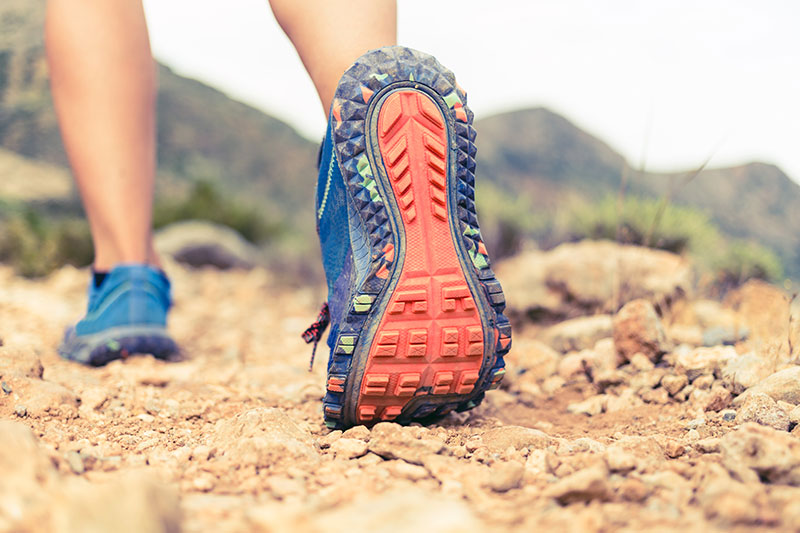Running Shoe Fit Guide
Whether you’ve just started running or you’ve been running for a while, finding the right running shoes can feel complicated. While brand reputation can be a big draw, it’s important to remember that the fit of the shoe is your biggest priority in order to avoid injury. A poor fitting running shoe can lead to conditions that range from blisters to plantar fasciitis. So how do you find the right fit?
Basic Running Shoe Fit
The basic guidelines for running shoe fit are:
•Snug in the heel with very little or no slip
•About thumb’s width between the top of the large toe and the edge of the shoe
•No areas of rubbing or friction
•Lacing edges that are parallel and a lace gap of about two finger widths
Other factors
While these guidelines are helpful, they don’t take into account the type of terrain you’ll be running on, any common pronation or supination issues you have, your gait, or your running distance goals.

Gait
Before buying a pair of running shoes, it can be beneficial to understand more about your gait. Your gait is the manner in which you move when you walk or, in this case, run. It takes into account your posture, how your foot strikes the ground, and if you have a tendency to turn your feet inward or outward (known as overpronation or supination).
Your gait can be examined at a running shoe store, as the staff there is typically trained to look for gait issues that impact the way you run. You can also observe other clues like your knees moving toward each other when you run or uneven wear patterns on your shoes. Some people do the “wet test” by wetting their foot and stepping on paper to see if their foot leaves a flat print or shows a print that only includes the heel and ball of the foot. Both would indicate an issue with pronation one direction or the other. If it is determined that you don’t have a neutral ankle posture, you can often correct this problem with shoe inserts that fit inside of your running shoes. Because the inserts will take up some volume in the shoes, they should be worn to try on any new pair of running shoes and when having your gait observed.

Terrain
Another factor to keep in mind in the type of terrain to plan to run on. If you plan to run on mostly even ground like a paved street, then it is common practice to go up half a size (about ⅛ inch) from your street shoes in order to leave room for your toes to move forward as they strike the ground. However, if you plan to run on technical (varied) terrain such as dirt trails, it can be helpful to keep your regular shoe size so that you can limit your forward movement in the shoe and maintain the greatest control over your balance.

Distance
Distance and competitiveness plays a part as well. Those who plan to compete in long runs may be interested in the weight of the shoe’s materials, whereas hobby runners might not find that as important. Again, the staff at the local running shoe store will have an understanding of which shoes are best suited to your running goals.
Brand Benefits
After you find a good fit we do suggest that you take into consideration the other benefits that some brands offer. Does your chosen brand have good customer service as mentioned in the reviews by previous customers? Do they offer any quality guarantees? If you spend a large amount on a shoe and the third time you run you start to notice a defect in the way it was made, can you reasonably expect to have it addressed? These are things that often go overlooked during the purchasing process but become important when you need them.
No matter your running level, there is a good chance that you’ll find the right fit by paying attention to the above tips and by checking in with running store staff members. Happy running!
Recommended Posts
Saying Goodbye to Leg and Foot Pain: The Power of Insoles
by Anna Heston • April 08, 2021Kick leg and foot pain to the curb with the proper shoe insoles! Discover relief now!
How Plantar Fasciitis Sufferers Find Comfort with Insoles
by Anna Heston • April 08, 2021Say goodbye to leg & foot pain! Insoles like Protalus T-100 offer relief, support & comfort.
Flat Feet: What It Really Means for Your Feet and Body
by Anna Heston • April 08, 2021Flat feet? Discover the challenges and relief with Protalus insoles! Say goodbye to pain, improve stability, and boost performance. Read more!















